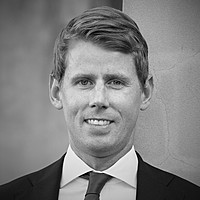Four mega trends: why consider these when investing in stocks?
In this 2-part series we cover the opportunity for Australian investors to identify and gain exposure to some of the large structural global mega trends. As bustling an economy as we are, remember the Australian economy represents just 2 percent of the global economy.
We live in a very large and diverse world. Why consider mega trends when investing in stocks?
For Australian investors, including many self-managed super funds, gaining exposure to some of these mega trends is not particularly straight forward.
Structural trends can provide a sustained tailwind to the growth of businesses that are strategically well-positioned. Investing with tailwinds is often advantageous: businesses in industries that are growing naturally will typically find it much easier to earn higher returns on investment.
Mega Trend #1: The emergence of the Asian middle-class
The emergence of the Asian middle-class will continue to generate larger than average rates of consumption growth. Based on analysis by Brookings*, of the US$29 trillion increase in global middle class* spend between 2015 and 2030, more than 84 percent will stem from Asia pacific. And of this, the vast majority stems from China and India.
Today, there are around 1.5 billion members of the Asian Pacific middle class. By 2030, this number will be closer to 3.5 billion. As middle-class wealth increases, the middle class population will travel even more than they do today. Airbus (Euronext: AIR), a high-quality aircraft manufacturer with few competitors, will produce many of the planes that will be required to satisfy the demand for flights out of Asia for the coming decades.
Mega Trend #2: The world is getting old
At the other end of the spectrum are the aging populations of many of the world's developed countries. We know about the dynamics of an aging population pretty well here in Australia. Yet many are often surprised to learn that the same dynamics that we are experiencing here exist in the United States, most Western European countries, and the United Kingdom. Even Brazil and Mexico fall into the same category.
Once again, with sustained structural changes of this nature comes opportunity. In the United States, for example, 10,000 citizens turn 65 years of age every day. And not surprisingly, the medical requirements of this age group look very different to those of their younger counterparts.
The percentage of individuals requiring vision correction is over 70 percent for persons at the age of 45. But this increases to 95 percent for persons at the age of 70, as the age-related ability to focus on near objects (presbyopia) continues to deteriorate.
This is great for Essilor International (Euronext: EI), the global leader in eyeglass lenses. Of the 7.2 billion global population today, 4.4 billion people require vision correction but only 1.9 billion people have received vision correction. More than 2.5 billion remain uncorrected; and another 5.8 billion people worldwide are not equipped with sunglasses to protect against UV rays and blue light.
Choose wisely
It is an enormous amount of work for an individual to identify and monitor these global themes; followed by the identification of the right individual stocks to buy that are well-positioned to benefit from these themes. Many investors use a small number of trusted fund managers to identify and monitor global themes and their subsequent investing opportunities. How will you take advantage of these trends and benefit from higher returns on investment?
Next week I will be posting the remaining two trends.
* (Brookings) The Unprecedented Expansion of the Global Middle Class (February 2017).
* The middle class has been defined by Brookings as comprising those households with per capita incomes between $10 and $100 per person per day (pppd) in 2005 PPP terms. This implies an annual income for a four-person middle-class household of $14,600 to $146,000.
1 stock mentioned

